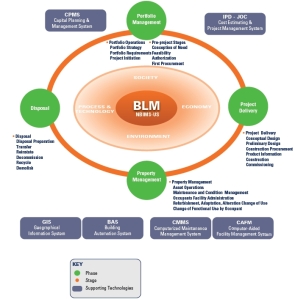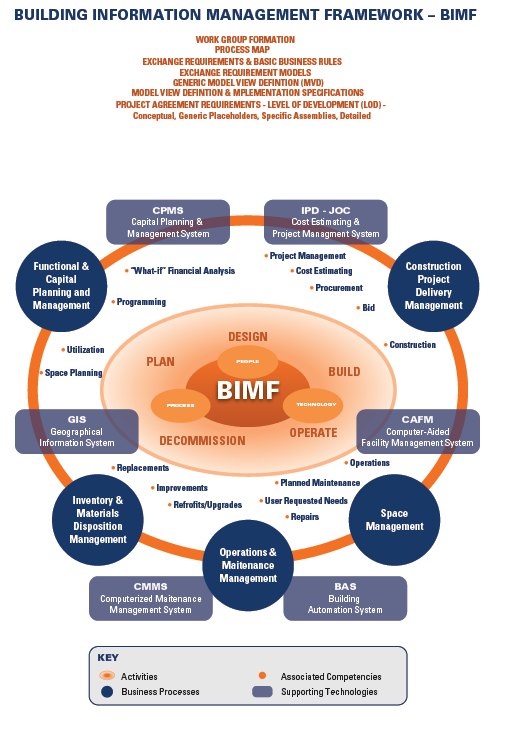Collaboration and integrated, efficient project delivery methods are needed to achieve productivity gains within the architecture, engineering, construction, owner and operator (A/E/C/O/O) industry. At the same time a robust ONTOLOGY and consensus-based standards demand immediate focus.
The combination of proven business practices such as integrated project delivery (IPD), job order contracting (JOC), and other efficient construction methods, with standardized terms, definitions, and metrics are needed in order to achieve economic and environmental gains.
Efficient life-cycle management of the built environment can be easilyi achieved through prescribing effective, repeatable elements and mechanisms in the creation, exchange and management of information. From a BIM perspective, for examply, elements and mechanisms include “Reference Standards” of technology, classification systems and conformance specifications; “Technical and Information Exchange Standards” that describe processes and exchange requirements for specific tasks during different parts of the building life cycle; “Standard Practice Guides,” which outline processes and workflows for data modeling, management, communication, project execution and delivery (and even contract specifications); and, finally, a “Glossary/
Terminology” section to rationalize the language and concepts used throughout the content in the standard.

via http://www.4Clicks.com – Premier cost estimating and efficient project delivery software solutions for JOC, SABER, IDIQ, MATOC, SATOC, MACC, POCA, BOA, BOS … featuring an exclusively enhanced 400,000 line item RSMeans Cost Database, visual estimating/automatic quantity take off ( QTO), and collaborative contract/project/document management, all in one application. Our technology is currently serving over 85% of United States Air Force bases and rapidly growing numbers of other DOD and non-DOD (United States Army Corps of Engineers, Army, GSA, Homeland Security, VA..) federal departments/agencies, as well as state/county/local governments, colleges/universities, healthcare, and airports/transportation. RSMeans Strategic Partner



